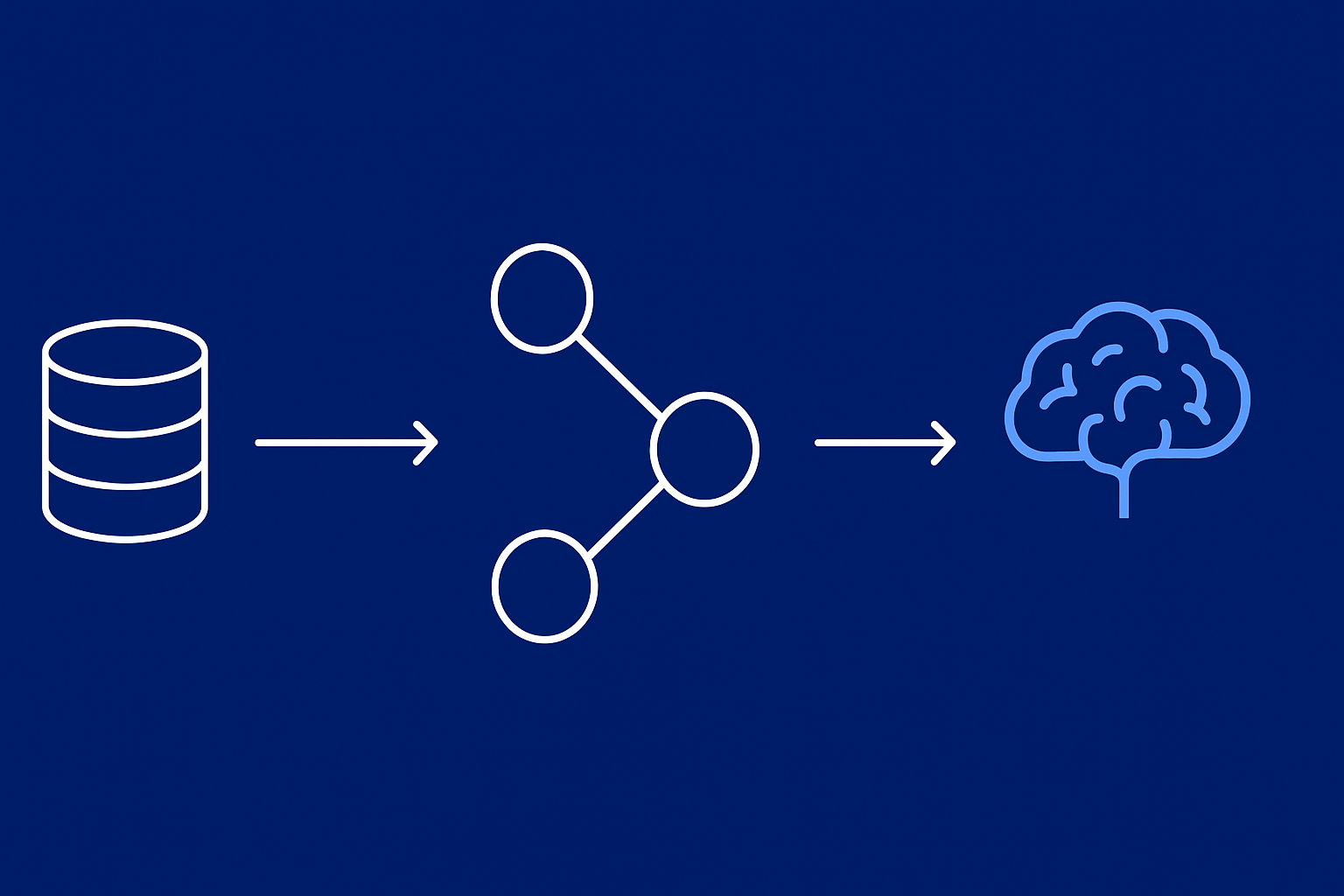From RAG to KG²RAG: Scaling | 매거진에 참여하세요
From RAG to KG²RAG: Scaling
#RAG #Knowledge #Graph #Enterprise #AIKnowlede #Data #Quality
The Real Key to AI Success Is Data
As of 2025, many enterprises have adopted generative AI,
but not all are seeing the returns they hoped for.
The problem isn’t usually the model. It’s the data.
Enterprise environments are overflowing with information
: internal documents, emails, ERP and CRM systems, plus unstructured data like logs, images, and audio.
But most of it lives in silos, is inconsistent, or quickly goes out of date.
In practice, the ROI of AI projects depends on a single question: How good is your data?
That’s why the industry is moving beyond simple RAG (Retrieval-Augmented Generation) toward KG²RAG,
a knowledge-graph-enhanced approach to search and generation.
This article looks at how companies can assess their data readiness,
what KG²RAG really means, and how it’s being applied in practice.
RAG: Principles and Pitfalls
How RAG works
Retrieval: Fetch relevant documents from a vector database
Generation: Use an LLM to generate a natural language response based on those documents
For example, when an employee asks, “What’s our vacation policy?”, RAG retrieves HR documents and the LLM summarizes an answer.
Advantages
No need to retrain models from scratch
Always up-to-date with fresh enterprise data
Delivers domain-specific knowledge
Limitations
Garbage in, garbage out: weak retrieval leads to bad answers
Query and LLM costs can pile up
As data grows, search quality often declines
KG²RAG: A Smarter Layer
What is KG²RAG?
It’s RAG + knowledge graphs. Instead of just retrieving documents, KG²RAG understands relationships between entities.
Traditional RAG → Finds “the contract between Company A and Company B”
KG²RAG → Retrieves “the terms of the 2023 contract between Company A and Company B”
Why it matters
- Accuracy: Relationship-based retrieval, not just keyword hits
- Explainability: Trace reasoning through graph paths
- Cost efficiency: Fewer irrelevant queries and LLM calls

How KG²RAG Works in Practice
Schema & Entity Extraction
Extract entities and relationships from documents:
Entities: companies, dates, contract clauses
Relationships: “Company A signed a contract with Company B in 2023 under X conditions”
Store these in a database or graph DB for structured querying.
Hybrid Retrieval (Vector + Graph)
Step 1: Vector search to find candidate documents
Step 2: Knowledge graph query to narrow down relationships (e.g., year=2023, company=A & B)
Step 3: LLM assembles a natural language answer
Fallback with Metadata Filtering
Chunk documents with metadata (e.g., company1=A, company2=B, year=2023).This helps, but without true relationship modeling, it remains limited.
Data Readiness Checklist
Collection
Inventory ERP, CRM, HR systems
Gather unstructured sources (docs, images, audio)
Review permissions and security rules
Cleansing
Remove duplicates
Add metadata to documents
Convert PDFs, apply OCR, normalize formats
Graph Design
Define domain schema (e.g., customer–contract–product–payment)
Link entities via common keys
Set up automated updates
Operations
Track accuracy, latency, and cost
Feed back errors into data/graph improvements
Enforce security and access controls
The DARE Framework
- Discover: Identify enterprise data assets
- Align: Standardize data and design schemas
- Refine: Validate quality, remove noise, enforce security
- Enable: Run graph-powered retrieval + RAG in production
Final Thoughts
AI success starts and ends with data. Even the best models fail when fed inconsistent, incomplete, or outdated inputs.
RAG is a strong first step, but it struggles with precision and cost at scale.
KG²RAG offers a more structured, explainable, and efficient path,
but it requires investment in graph design, governance, and operational discipline.
For enterprises, the roadmap is clear:
- Build a comprehensive data inventory
- Standardize and structure your data
- Start with RAG, then evolve toward KG²RAG
In the end, the companies that win with AI won’t just have smarter models—they’ll have smarter data.






